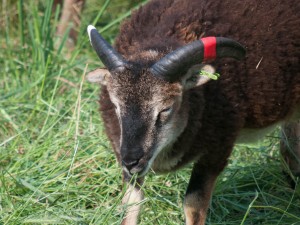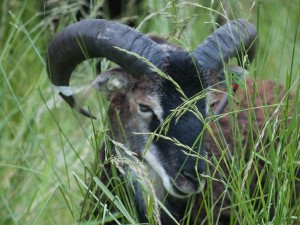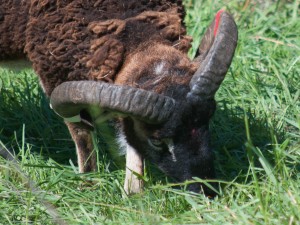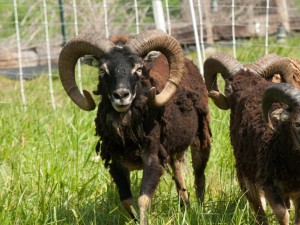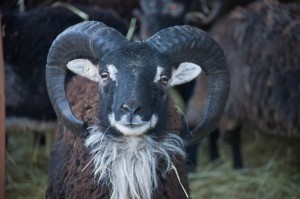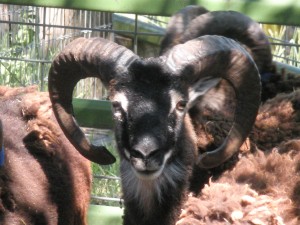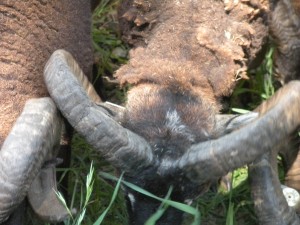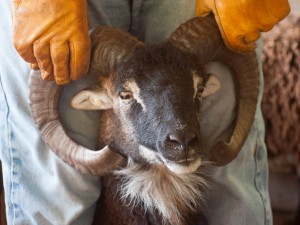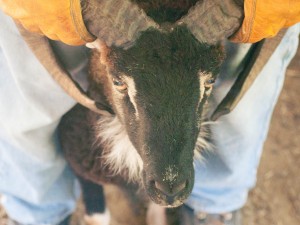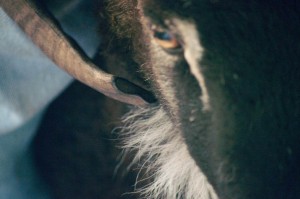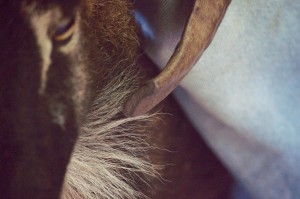When to trim Soay ram horns and when to leave them alone: a photo essay
It’s been a quiet week at Saltmarsh Ranch, at least compared to the recent weeks of frantic downsizing. Temperatures have fallen to normal autumn levels and the fire danger level was reduced from “extreme” to “high,” still scary but a whole lot better than it was all summer. The sheep are making one more pass through the pastures before converting to hay for the winter, and Steve hayed the upper pasture with no equipment malfunctions and no field creatures caught up in the bales, thank goodness.
All of which means it is time to catch up a big here on the blog. I’ve been meaning to share a group of pictures illustrating the dilemma of when to trim a Soay ram’s horns and when to wait and see whether they will clear. I hope you will find them useful.
Our poster boy for this exercise is Saltmarsh Arundel, a 2013 son of Astro x Ossie. Regular readers will recall Astro had a particularly splendid set of horns and we broke our conservation rotational breeding rules to breed him a second time three years ago. He did not disappoint. His offspring have bred for us and most have gone to new homes. Arundel is the last of Astro’s sons left on our farm.
By January 2015, Arundel had developed even more Astro-like horns and he was one of our most handsome rams, sporting a droll white “beard” under his chin. We planned to breed him as part of the Astro legacy or, if we couldn’t find room in our lineup, send him off to breed elsewhere.
A scant two months later, August 2015, as part of a horn check of all our rams, we discovered that Arundel’s pesky right horn has shifted a bit and is once again close enough to his head to keep an eye on him. We still don’t know whether his horn will eventually clear or need a wee bit more trimmed, but even if we have to trim his horn, he still will produce great-looking lambs and the odds are his offspring will not need their horns clipped.
One thing we know is that Arundel will be breeding elsewhere, alas, and not because of his horns, but because of our need to downsize the flock. Until he is sold and ready to leave our farm, we will continue to monitor his right horn tip and otherwise admire his stud-muffin good looks. Hats off to Astro for giving us such handsome lambs!
For now …
